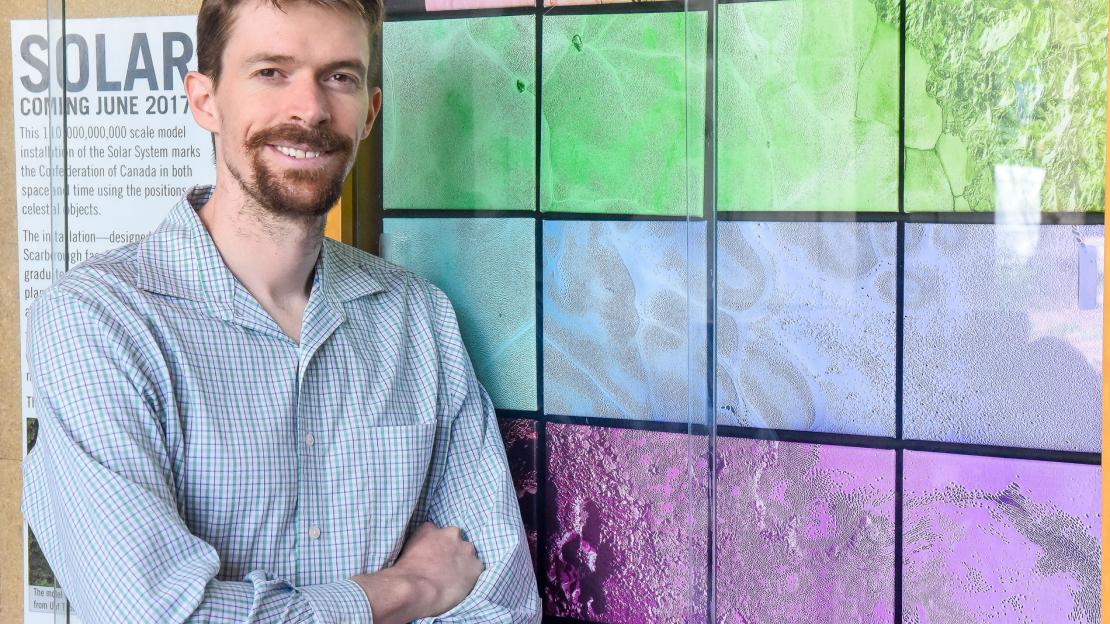As the first close-up images of Pluto taken by NASA’s New Horizons space probe were being unpacked back on Earth, they revealed a stunning sight.
Not only is the terrain of the small, icy world covered with craters, it also contains mountains and glaciers of ice – all signs of recent geological activity.
“Everyone was just blown away by what they saw,” says Noah Hammond, a postdoc in the Centre for Planetary Sciences at U of T Scarborough.
“It was hard to know what to expect with Pluto. Since it is so small and cold, people thought it might be just a boring cratered surface with no geological activity. That certainly isn’t the case.”
The mission took place right around the same time Hammond was doing his PhD research, part of which focused on trying to understand the interior structure of Pluto and how it may lose or retain heat over time. What they found is that it seems likely that Pluto may have a liquid ocean underneath its 200-kilometre thick crust.
“I always found Pluto to be a really beautiful, fascinating world,” he says. “There’s ice flowing and cracking across the entire surface and building up these mountains made entirely out of ice. There are also a lot of mysteries waiting to be solved; it just reality really blows my mind.”
Then late last year an email popped up in his inbox looking for submissions for U of T’s upcoming SciArt Gallery, part of the national Science Rendezvous event. So he reached out to Harrison Taylor, a local artist who Hammond knew was interested in space and nature, to see if he was interested in a collaboration.
After bouncing some ideas back and forth they settled on the New Horizon images. The result is Pluto: A Strange and Beautiful World, an installation piece with 16 separate square tiles printed on canvas, each containing a false colour photo taken by New Horizon as it did its flyby.
“We took a bit of artistic license with the colour because we want to draw people in to take a closer look at the images and see all the fascinating detail on Pluto’s surface,” says Hammond, adding that the colour spectrum they chose roughly matches the changing geological terrain.
Both brought very specific skills to the project – Hammond, the scientist with a more analytical take on the images, and Taylor the artist offering a more subjective tone. Having a mysterious, beautiful subject didn’t hurt.
“We wanted to unveil the beauty of Pluto and to open people’s minds to the beauty found in nature, even one that can be found in the far reaches of our solar system on a frozen world,” says Hammond.
While debate about Pluto’s designation as a planet has been raging among academic circles in recent years (the International Astronomical Union has declared Pluto is actually a “dwarf planet”), Hammond isn’t overly concerned about labels.
“Either way Pluto is still there, and it’s still this amazing world that has a lot to teach us,” he says.
Hammond, whose research focuses mainly on icy planets, explains there are a few objects as large as Pluto found in the Kuiper belt, a disc consisting of smaller icy objects floating around in the outer Solar System.
“That’s really cool to think about as well – it could be just as interesting to have a solar system with 11 planets instead of eight.”
